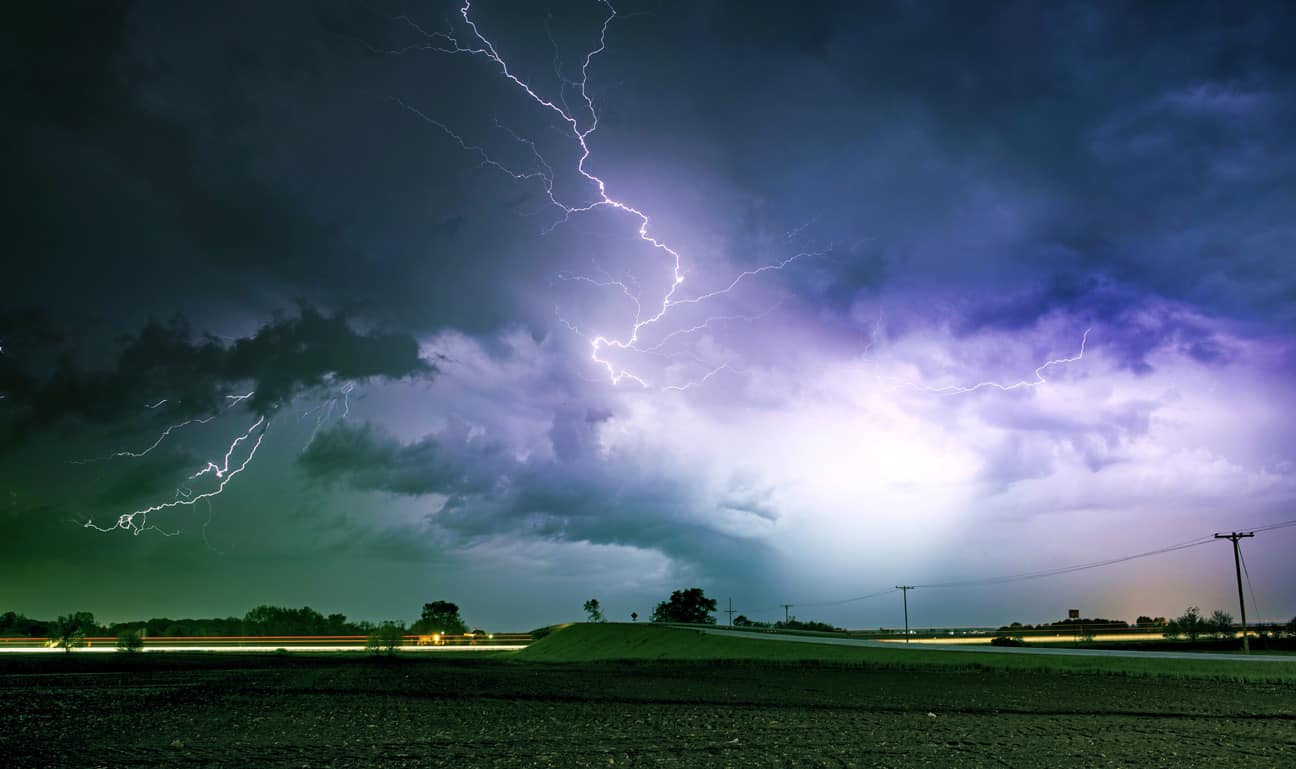
Preparing for spring weather
Published March 1, 2023By Christian Toews
Spring is a time of change with longer days, blooming trees and warmer weather. Unfortunately, spring also means a time of uncertainty for many people in the midwestern United States.
Dangerous weather can occur throughout the year, but spring increases the likelihood of a severe weather event.
Oklahomans are very familiar with the sounds that emit from our phones or the television when the local weather persons break in with emergency notifications. These alerts can be alarming, but with the proper preparation, this spring storm season can be less frightening.
Knowing the Facts
According to National Oceanic and Atmospheric Administration (NOAA), The peak “tornado season” for the Southern Plains (e.g., Texas, Oklahoma, and Kansas) is from May into early June.
However, tornadoes can happen at any time of year.
In November of 2022 a tornado outbreak that occured across the Choctaw Nation caused damage in Bryan, Pushmataha, LeFlore, Choctaw and McCurtain counties.
The worst devastation was in Idabel, Oklahoma, where a tornado destroyed or damaged 130 homes and businesses.
The National Weather Service officially determined that the tornado was an EF4.
Jerry Falling’s home was severely damaged during this tornado.
“When we drove up my street, I thought, ‘I don’t have a home,’”said Falling.
According to Falling, he used to have so many trees around his house that he couldn’t see the highway about half a mile away.
After the tornado came through, all of the trees were gone.
Falling did not have an underground storm shelter at his house, so he went to a local church that is a sturdier structure.
After this incident, he said he would install an underground storm shelter as quickly as possible.
According to data from NOAA’s Storm Prediction Center, there were 984 confirmed tornados in 2022.
It’s important to distinguish between a watch and a warning when severe weather strikes.
Tornado Watch
According to NOAA, a watch does not mean a tornado is present. It means that conditions are favorable for tornadoes and severe weather to form. A watch can cover parts of a state or several states. When a watch is issued, you should watch and prepare for severe weather.
Tornado Warning
A tornado warning is more dire than a watch. A warning means a tornado has been reported by spotters or indicated by radar, and there is a serious threat to life and property to anyone in the tornado’s path. A tornado warning indicates that you should act immediately to find safe shelter. A warning can cover parts of counties or several counties in the path of danger, according to NOAA.
Preparation
Although there is no way to control the weather or predict it with absolute certainty, there are steps you can take to ensure the likelihood of being protected during severe weather.
Here are some practical steps you can take to prepare for the unexpected this spring, according to ready.gov.
Know your area’s tornado risk. In the U.S., the Midwest and the Southeast have a greater risk for tornadoes.
Know the signs of a tornado, including a rotating, funnel-shaped cloud, an approaching cloud of debris or a loud roar like a freight train.
Sign up for your community’s warning system. The Emergency Alert System (EAS) and NOAA Weather Radio also provide emergency alerts. If your community has sirens, then become familiar with the warning tone.
Pay attention to weather reports. Meteorologists can predict when conditions might be right for a tornado.
Identify and practice going to a safe shelter, such as a safe room built using FEMA criteria or a storm shelter built to ICC 500 standards. The next best protection is a small, interior, windowless room or basement on the lowest level of a sturdy building.
Plan for your pets. They are important members of your family, so they need to be included in your family’s emergency plan.
Prepare for a long-term stay-at-home or shelter-in-place by gathering emergency supplies, non-perishable foods, water, medical supplies and medication.
During a tornado, having shelter is essential.
The Choctaw Nation of Oklahoma Storm Shelter program provides a grant for storm shelters to tribal members who live in Oklahoma, Texas, Kansas, Missouri and Arkansas.
Specific criteria and qualifications must be met to qualify for this grant which can allow for up to $3,500 toward your storm shelter.
Learn more about the grant, how to apply, and qualifications by visiting choctawnation.com.
Tornadoes might be the most feared severe weather event, but there are others to prepare for before the spring season ramps up.
A severe thunderstorm, even without a tornado, can be very destructive. Hail can cause significant damage to roofs, vehicles, campers, pets and livestock. High winds can cause damage to roofs, trees, windows, and more.
It’s essential to be prepared for severe weather regardless of the presence of a tornado.
Spring weather can cause some anxietyed, but having a plan is place can ease stress and feel confident going into this storm season.
To learn more about preparing for all types of natural disasters, visit ready.gov.
Spring Weather Facts
MAHLI CHITO – A BIG WIND
Although it covers just 15% of the U.S., Tornado Alley lays claim to nearly 30% of all the confirmed tornadoes in the Storm Prediction Center’s database between 1950 and 2012. Tornado alley states include lowa, Kansas, Minnesota, Nebraska, North Dakota, Oklahoma, South Dakota, and Texas.
MVLAHTA – LIGHTNING
The National Weather Service collects information on weather-related deaths to learn how to prevent lightning tragedies. Many victims say they were “caught” outside in the storm and couldn’t get to a safe place. Other victims simply waited too long before seeking shelter.
HATA̱FFO – HAIL
State Farm paid out over $3.1 billion in hail claims in 2020, according to an April 2020 analysis by the insurer. Texas was the state with the most hail claims paid for auto and home insurance, with $474.6 million in losses, followed by Illinois ($394.2 million), Minnesota ($259.2 million) and Missouri ($236.9).

